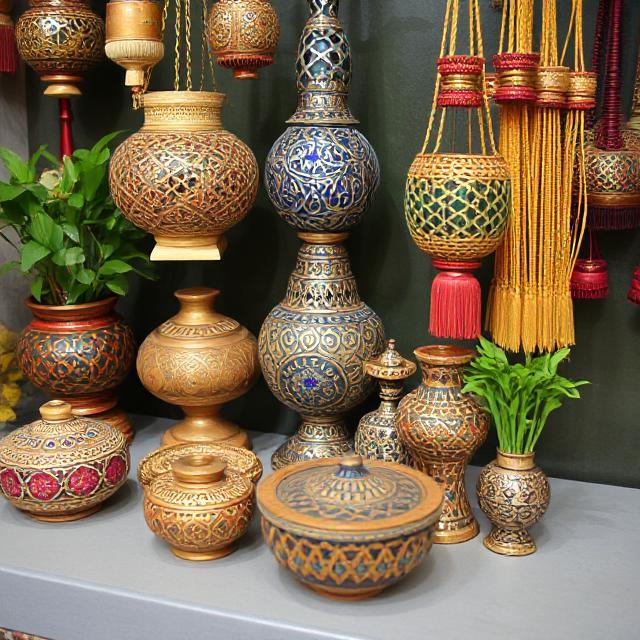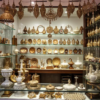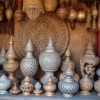Handicraft Products in Bangladesh: A Guide to Jute, Jamdani & More
Bangladesh, a land of rivers, lush landscapes, and a rich cultural tapestry, is also a treasure trove of exquisite handicraft products. From ancient weaving traditions to modern designs, the country’s artisans have been crafting beauty for centuries, imbuing each piece with stories, history, and a touch of the soul. This detailed article explores the diverse world of Bangladeshi handicrafts, highlighting their historical significance, unique characteristics, and socio-economic impact.
The Timeless Legacy of Bangladeshi Handicrafts
The history of arts and crafts in Bangladesh is deeply rooted in its ancient past. Archaeological findings from sites like Wari-Bateshwar and Mahasthangarh point to a sophisticated culture of pottery, metalwork, and other artisanal creations dating back to 500 BC. The textile industry, in particular, has a long and celebrated history, with fine Muslin fabric from Bengal being a prized commodity in ancient Roman and Greek markets.
Over the centuries, these traditions were passed down through generations, often within specific castes and communities. While some of these ancient techniques faced challenges during periods of colonization, the resilience of rural communities ensured their survival. Today, the handicraft industry in Bangladesh is a vibrant blend of these heritage crafts and innovative designs, making it a powerful testament to the nation’s artistic ingenuity.
Exploring the Diverse World of Bangladeshi Handicrafts

Bangladeshi handicrafts are known for their use of locally sourced, natural, and eco-friendly materials. The country’s artisans expertly utilize jute, clay, bamboo, cane, wood, and various textiles to create a wide range of products.
1.Textiles: The Woven Wonders
Textiles are arguably the most iconic and popular category of Bangladeshi handicrafts. The country’s handloom industry is celebrated for its intricate weaves and exceptional craftsmanship.
Jamdani: A UNESCO Intangible Cultural Heritage, Jamdani is a type of intricately patterned muslin fabric. Woven on a handloom, this “flowered muslin” features elaborate motifs created by skilled weavers who insert colored, silver, or gold threads between the warp. A single Jamdani saree can take up to four months to complete, a testament to the immense skill and labor involved.
Nakshi Kantha: More than just a quilt, a Nakshi Kantha is a piece of art that tells a story. This traditional embroidered quilt is made by layering old sarees, lungis, or dhotis and stitching them together with colorful threads. Each stitch and motif often depicts folk tales, scenes from rural life, or religious symbols.
Muslin: Once a luxury fabric that adorned royal courts, Muslin is a fine, transparent cotton fabric that was a major export from Bengal for centuries. Its delicate quality and breathability made it highly sought after worldwide.
Jute and Other Natural Fibers: The “Golden Fiber” of Bangladesh, jute is a versatile material used to create eco-friendly bags, rugs, mats, and home décor items. Other natural fibers like sea grass, water hyacinth, and palm leaves are also used for basketry and other decorative pieces.
2.Pottery and Terracotta
The art of pottery in Bangladesh is as old as its civilization. Artisans, particularly from the Kumarikata village, create beautiful terracotta and clay products that are both functional and aesthetic. From decorative pots and vases to intricate sculptures, these items showcase the local artistry and are often inspired by nature and rural life.
3.Wood and Bamboo Crafts
Wood and bamboo are sustainable materials that are widely used to create a variety of products. Skilled artisans craft everything from intricate wooden furniture and decorative pieces to household items and even traditional wooden boats. Bamboo, with its versatility, is transformed into baskets, home décor, and other daily-use items.
4.Metalwork
The village of Dhamrai, near Dhaka, is renowned for its metalworking traditions, particularly in brass and copper. Using the “lost-wax casting” technique, artisans create exquisite statues, utensils, and religious items. These pieces reflect a centuries-old tradition of craftsmanship and attention to detail.
5.Brass and Copper Utensils:
Traditional brass and copper utensils are also popular items, often used for both practical and decorative purposes.
The Socio-Economic Impact of Handicrafts
Beyond their cultural significance, handicraft products in Bangladesh play a vital role in the country’s socio-economic landscape. The industry is a major source of employment, particularly for rural women who make up a significant portion of the workforce.
Women’s Empowerment: The handicraft sector has been instrumental in empowering women, providing them with a source of income and financial independence. Many women-owned enterprises and fair-trade organizations, such as Aarong, Kumudini, and BaSE, have played a transformative role in supporting these artisans, ensuring fair wages and sustainable working conditions.
Poverty Reduction: The decentralized nature of the industry, with small production units often located in rural areas, provides a backup source of income for agricultural communities, especially during periods of drought or poor harvest.
Cultural Preservation: By providing a livelihood for artisans, the industry ensures that traditional techniques and knowledge are passed down from one generation to the next, preserving Bangladesh’s unique cultural heritage.
Global Recognition: The global demand for sustainable and handcrafted products has boosted the export of Bangladeshi handicrafts. Items made from natural materials like jute and bamboo are particularly popular in Europe and North America, showcasing the country’s artistry on the world stage.
The world of Bangladeshi handicrafts is a vibrant and compelling journey through history, culture, and artistic expression. Each product tells a story, and with every purchase, you not only acquire a beautiful item but also contribute to the preservation of a timeless tradition and the empowerment of skilled artisans.






